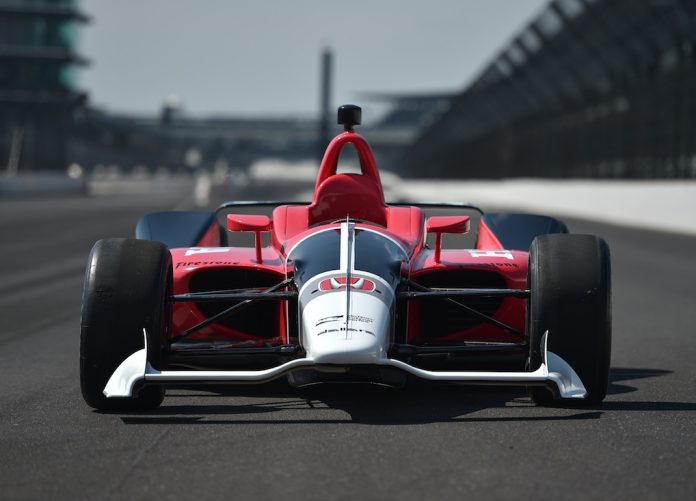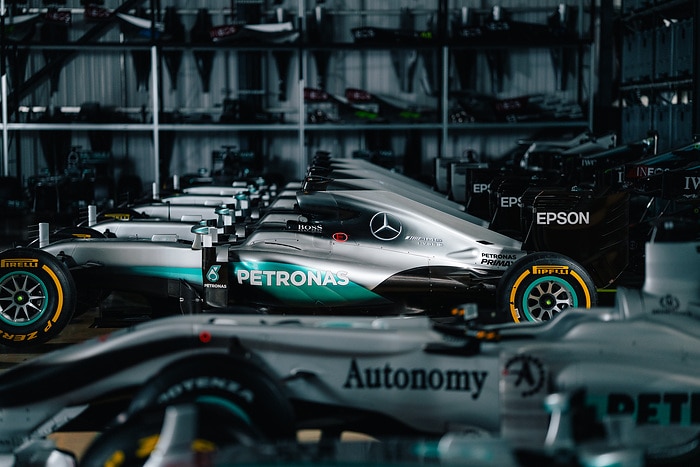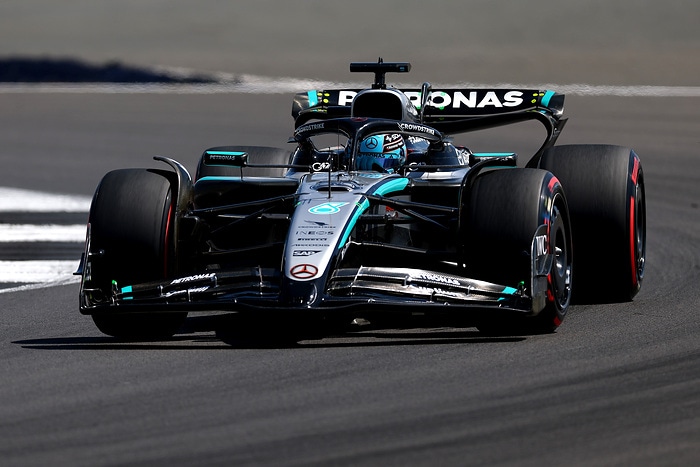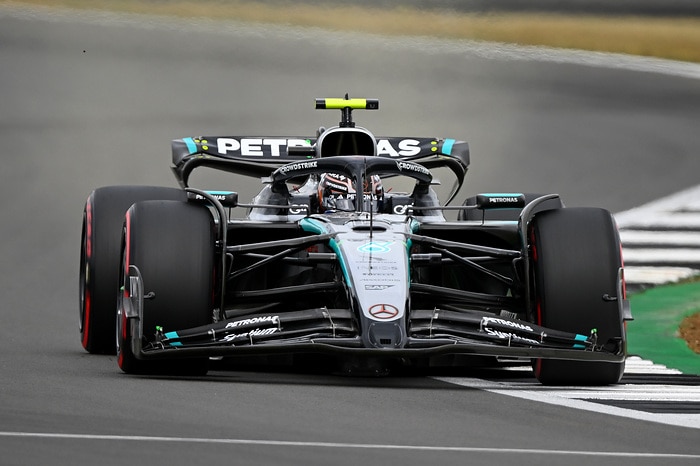2018 Indy Car Debuts At Indianapolis

INDIANAPOLIS — Next year’s Verizon IndyCar Series car made its debut Monday at Indianapolis Motor Speedway.
The cars that will again be powered by Chevrolet and Honda engines will represent a collaboration of several key constituents — IndyCar, Dallara and design experts in the United Kingdom — paired with input from drivers, teams and fans.
The entire process fell under the watchful eyes of Jay Frye, IndyCar’s president of competition and operations; Bill Pappas, IndyCar ‘s vice president of competition/race engineering; Tino Belli, IndyCar ‘s director of aerodynamic development; and Dallara, supplier of the IR-12 chassis that has been used by all Verizon IndyCar Series competitors since 2012 and supplier of the stylish and functional universal aerodynamic bodywork kit that will cover each chassis beginning next season.
“The process started a year ago April, and we took the input of our fans, drivers, teams, manufacturers, partners – everyone shares in this,” Frye said. “There is a historical component to this design, and it comes with a very forward look and all the latest components. Although the design looked good on paper it looks even better in person. We couldn’t be more excited to get this car on the track.”
The new car will come in two specifications: one for superspeedway ovals and the other for use on short ovals, permanent road courses and temporary street circuits.
The car will hit the track Tuesday at Indianapolis Motor Speedway with Juan Pablo Montoya (Chevrolet) and Oriol Servia (Honda) driving.
Fans of the sport liked the look of the low-line turbocharged Indy cars of the early 1990s, and that sentiment inspired the design of this car. The goal was to give the car a sleek look reminiscent of those popular cars while offering an attractive edge to a new generation of drivers and fans.
A lower engine cover and lower short oval/road course rear wing endplates provide a long, lean look. Gone are the rear wheel guards, which made the car appear bulky.
The wings are lower, smaller and more aesthetically pleasing.

The 2018 Dallara Indy car (IndyCar photo)
The LED display system on each car – which currently shows position in the running order, the time of a pit stop and when push-to-pass is engaged – is more sophisticated, expanding opportunities for providing fans with content.
The fan experience was taken into account with new camera positions strategically placed on the car. Views will be available from the nose and rear attenuator in addition to the traditional overhead and rear-view mirror locations.
IndyCar and Dallara have six years of collective research and study with the IR-12 chassis to help understand the limits of control. This information is included in the design of the new car.
Side-impact protection has been significantly improved in a variety of ways, including the sidepod leading edge and induct duct joined with two bulkheads to create a proper crushable structure ahead of the radiator. The unitary construction is designed to absorb loads from all directions, and the structure is 8 to 10 inches wider at the driver’s hips.
Source :speedsport.com






















